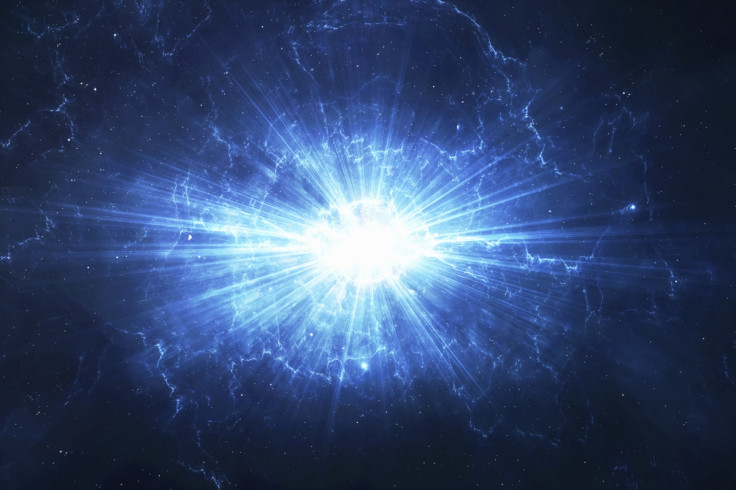Scientists at Cern have shed light on antimatter for the very first time
Major breakthrough in physics as scientists measure antihydrogen atoms.

Niels Madsen, Swansea University
Physicists have believed that the universe is made of both matter and antimatter since the 1930s. While we are well aware of what the physical matter is, antimatter has remained an elusive substance.
But that is about to change: our newly-published research on antihydrogen – the antimatter counterpart of hydrogen – heralds a new era in the effort to understand more about antimatter and how it has managed to evade us.
So what is antimatter? In the late 1920s, Paul Dirac predicted the existence of "mirror" particles – opposite counterparts to the already known electrons and protons. These mirror particles had opposite charge so they were a positive electron and a negative proton – later named positron and antiproton. The positron was discovered a few years later in 1932, but it took scientists until 1955 to discover the antiproton.
The discovery was tricky as antimatter doesn't seem to be prevalent in the universe. In fact, the antiproton was only discovered because a particle accelerator was built specifically to create them.
According to Einstein's famous equation E=mc² mass can be converted to energy and vice versa. The accelerator worked by supplying enough energy to create antiprotons by converting energy to mass. Mass is a compact holder of energy, but not all of it can normally be released – even a nuclear weapon only releases a tiny fraction of the energy of its mass.
When a particle and its antiparticle are brought together, they annihilate each other – that is they collide and disappear – and all their mass energy is released in a burst of light. The opposite is also true: with sufficient energy, we can create matter, but like annihilation, this process is also symmetric, so matter and antimatter will always be created in equal quantities.
This is the process by which the first antiproton was created, and it is still what we use today. But it is incredibly inefficient: in a typical creation process at the CERN antiproton decelerator, about one million protons are collided with a metal target to yield a single antiproton.
Why does it matter?
Physicists believe that the universe was created in the Big Bang billions of years ago, and in particular that it started out so hot and tiny that no particles could form at the very start. As this primordial energy soup cooled, particles and antiparticles formed in equal quantities. But less than a second after the Big Bang, something happened that caused an asymmetry, leaving a small excess of matter behind. So where did all the antimatter go? We simply don't know – this is one of the greatest mysteries of physics.
There is no explanation for this asymmetry, in fact we cannot explain how we can be here, as this asymmetry is required for the universe we know to exist.
Despite many lifetimes of careful observation of the skies, so far no clues have been found to tell us why there is this asymmetry between matter and antimatter. Many scientists have looked in various ways at antimatter, to try to unravel if there is some fundamental difference between it and matter that could have caused this asymmetry.

The traditional method is to look at the results of high energy collisions, for example by using the large hadron collider at CERN. However, we are now pursuing a very promising alternative to this.
Hydrogen is the most abundant substance in the universe and consists of just one electron and one proton. It's fair to say that it is the best understood system in physics, both experimentally and theoretically. It also played a key role in the discoveries that led to quantum mechanics. The internal properties of hydrogen have been studied to staggering precision using lasers, and the energy difference between its ground state and the first excited state – where it has excess energy – is known in detail. It is similar to a guitar string – its ground state means the string is not vibrating and an excited state means it is. The more it is vibrating, the more excited it is.
For more than 30 years, researchers have been working to unravel the mystery of antimatter using antihydrogen, and we have just accomplished a major breakthrough.
What we have just done is to shine laser light on trapped antihydrogen atoms and excite them to their first excited state. We can study their behaviour as they gain energy from the laser light (get excited). Eventually, they break apart – that's how we could tell they had absorbed the energy.
One reason it has been so hard to do this is that antimatter is always annihilated when it encounters matter. This makes it challenging to store – you can't just put it in a bottle. However, we have already managed to make and hold antihydrogen using an array of electromagnets that can constrain it, which allowed us to do this research.
This very first measurement allows us to compare hydrogen and antihydrogen with unprecedented precision – indeed, it is the most precise comparison of an atom and an antiatom ever made.
Using this measurement, they look identical, and though that was to be expected, it is the first experimental confirmation. For now, the mystery of the elusive antimatter continues – but it is something we are continuing to pursue.
Niels Madsen, Professor of Physics, Swansea University
This article was originally published on The Conversation. Read the original article.
© Copyright IBTimes 2025. All rights reserved.





















